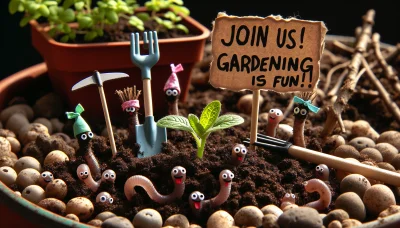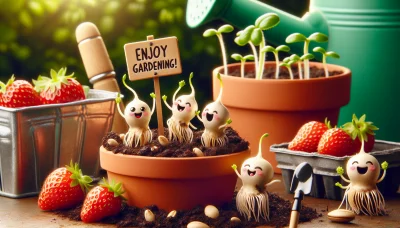Eating a persimmon Quiz
Test Your Knowledge
Question of
The Delights of Eating a Persimmon
Persimmons are a unique fruit that offers a delightful eating experience, combining a sweet, honey-like flavor with a smooth, almost custard-like texture when fully ripe. This exotic fruit not only tantalizes the taste buds but also packs a nutritional punch. Rich in vitamins A and C, persimmons support immune function and skin health, while their high fiber content aids in digestion. Additionally, they contain antioxidants that help combat oxidative stress, contributing to overall health and well-being. Whether enjoyed fresh, dried, or incorporated into recipes, persimmons are a delicious way to enrich your diet.
Choosing the Right Persimmon Variety
When it comes to selecting the perfect persimmon, understanding the differences between the Fuyu and Hachiya varieties is key. The Fuyu persimmon is known for its squat, round shape and its ability to be eaten while still somewhat firm, offering a sweet, crisp taste. On the other hand, the Hachiya persimmon is more elongated and acorn-shaped, and it's best enjoyed when fully ripe and soft, revealing a rich, honey-like flavor. The texture of the Hachiya can be quite astringent if eaten before it reaches peak ripeness, contrasting with the Fuyu's more forgiving, crunchy texture. Whether you prefer the immediate gratification of a Fuyu or the luscious, pudding-like consistency of a ripe Hachiya, understanding these differences can greatly enhance your persimmon experience.
How to Grow Persimmon Trees in Your Garden
Persimmon trees are a delightful addition to any garden, offering not only delicious fruits but also beautiful foliage. To successfully grow persimmon trees, start by choosing a location that receives full sunlight, as these trees thrive in areas that are well-lit for most of the day. Soil conditions are equally important; persimmon trees prefer well-draining soil with a neutral to slightly acidic pH. Amending your soil with compost can improve its structure and fertility, promoting healthier growth. When it comes to watering, young trees require consistent moisture to establish their root systems, so aim to water them deeply once a week. However, once established, persimmon trees are relatively drought-tolerant, though regular watering during dry spells will support fruit production. With the right care, your persimmon trees will grow to be a fruitful centerpiece in your garden.
Harvesting and Storing Persimmons
Persimmons are best harvested when they are fully colored but still firm to the touch. This usually occurs in late fall, just before the first frost. To ensure they ripen to their sweetest and softest, it's important to pick them at the right time. After harvesting, if persimmons are not yet ripe, they can be stored at room temperature until they reach the desired ripeness. For longer storage, once ripe, persimmons can be kept in the refrigerator to significantly extend their shelf life. Wrapping each fruit in paper and storing them in a plastic bag can also help retain moisture and prevent them from drying out. It's essential to handle them gently to avoid bruising, which can lead to premature spoiling.
Preparing Persimmons for Eating
To properly prepare a persimmon for eating, start by choosing a ripe fruit, which should feel soft to the touch. Wash the persimmon thoroughly under running water. To peel the persimmon, you can use a paring knife or a vegetable peeler, gently removing the skin which can be a bit tough and bitter. Once peeled, you can cut the persimmon into slices or wedges, depending on your preference. Remove any seeds that you may find, although many persimmons are seedless. For a sweeter experience, try eating persimmons when they are fully ripe or even overripe, as they become sweeter and softer, almost pudding-like in texture. Enjoy your persimmon as a healthy snack, in salads, or as a sweet addition to desserts.
Creative Ways to Enjoy Persimmons
- Persimmon and Pomegranate Salad - A refreshing mix of sweet persimmons, tart pomegranate seeds, mixed greens, and a light vinaigrette.
- Spiced Persimmon Bread - A moist, flavorful bread spiced with cinnamon, nutmeg, and cloves, featuring ripe persimmons.
- Persimmon Smoothie - Blend ripe persimmons with banana, Greek yogurt, and a touch of honey for a creamy, nutritious smoothie.
- Roasted Persimmons - Halve persimmons, drizzle with honey, and roast until tender. Serve as a simple dessert or a topping for oatmeal.
- Persimmon Salsa - Combine diced persimmons with onion, cilantro, lime juice, and jalapeno for a sweet and spicy salsa perfect for chips or as a topping for grilled meats.
- Chocolate Dipped Persimmons - Slice persimmons and dip in melted dark chocolate for a decadent treat.
- Persimmon Caprese Salad - Layer sliced persimmons with fresh mozzarella and basil leaves, drizzle with balsamic glaze for a twist on the classic Caprese.
- Persimmon Chutney - Cook down persimmons with vinegar, sugar, and spices for a chutney that pairs wonderfully with cheese or as a spread for sandwiches.
- Persimmon Pancakes - Add pureed persimmon to your pancake batter for a seasonal twist on breakfast pancakes.
- Persimmon and Goat Cheese Pizza - Top your pizza dough with slices of persimmon, goat cheese, and arugula for a sweet and savory combination.
The Health Benefits of Persimmons
| Nutrient | Health Benefits |
|---|---|
| Vitamin A | Improves eye health and boosts the immune system |
| Vitamin C | Antioxidant that helps in healing and skin health |
| Vitamin E | Protects against oxidative damage and supports skin health |
| Fiber | Enhances digestive health and aids in maintaining a healthy weight |
| Manganese | Supports bone health and helps in the metabolism of amino acids, cholesterol, and carbohydrates |
| Potassium | Regulates blood pressure and supports heart health |












